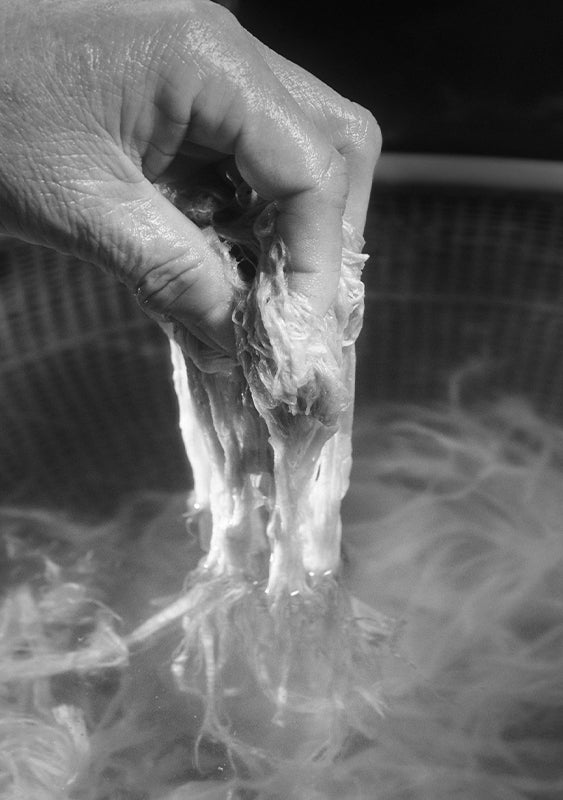HANJI
'한지'(Hanji)
Hanji is a special form of Korean paper that
is made from the inner bark of dak (mulberry) tree. The bark is collected,
steamed, boiled, dried, peeled, boiled again, beaten, mixed, strained, and dried (among other things). Part of
the process involves adding dak-pul (a paste made from hibiscus manihot
flowering plant), this aids in holding pulp fibres together, adding strength and durability. In total there are
exactly 99 processes need to create the perfect hanji, the 100th part of the
process is actually using the paper, which birthed hanji’s other name baekji (100th paper).
In addition to its strength, hanji is known for its permeability for air and moisture, sound-proofing, and its
insulation capabilities. Its uses therefore are varied - from lining floors, walls and door frames to creating
furniture, lamp shades or simply for writing on.
1. Strip barks of
dak (mulberry) trees are boiled for seven hours.
2. The bark is thoroughly dried.
3. The dried result is called
heukpi, this dark outer bark is washed in water
for 10 hours.
4.
Heukpi is then skinned revealing the white inner bark,
baekpi.
1. Strip barks of
dak (mulberry) trees are boiled for seven hours.
2. The bark is thoroughly dried.
3. The dried result is called
heukpi, this dark outer bark is washed in water
for 10 hours.
4.
Heukpi is then skinned revealing the white inner bark,
baekpi.
5. Ashes from bean or buckwheat stems are added and boiled with
baekpi for
five hours.
6. The
baekpi is placed on a flat stone board and pounded.
7. The
baekpi is coated with dak-pul (paste from hibiscus manihot flowering
plant) and stirred. The
muljil process begins with baekpi shaken in water on
bamboo screens to criss-cross the fibres, which stick to each other and form a pulp.
8. The pulp is then dried and stacked on a wooden panel in the sun. After it’s dried,
dochimjil begins, this is the pounding of sheets that increases density in the
fibre, creating an even surface.
5. Ashes from bean or buckwheats stems are boiled again with baekji for 5 hours.
6. The skinned and cleaned
baekpi is placed on a flat stone board and pounded.
7. The
baekpi is coated with dak-pul (paste from hibiscus manihot flowering
plant) and stirred. The
muljil process begins with baekpi shaken in water on
bamboo screens to criss-cross the fibres, which stick to each other and form a pulp.
8. The pulp is then dried and stacked on a wooden panel in the sun. After it’s dried,
dochimjil begins, this is the pounding of sheets that increases density in the
fibre, creating an even surface.
© Images provided by
– Korea Cultural Heritage Foundation
– Cultural Heritage Administration















